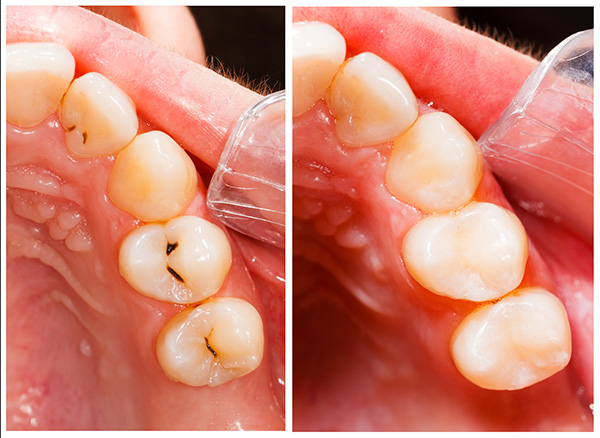Fillings
A filling or restoration may be necessary for the treatment of decay in a tooth. Each tooth is evaluated for defects in the surface of the tooth through a manual exam and a thorough radiographic evaluation.
Tooth decay is a bacterial infection that creates a cavity or hole in the enamel or deeper Dentin layer of a tooth. Left untreated the decay may reach the nerve or blood supply of the tooth causing pain or infection.
If decay is present, Dr. Viernes will determine the appropriate treatment and consult with you on the options for restoration of the tooth based on a variety of factors. Sometimes we choose a filling. A filling is silver amalgam or tooth-colored material that is placed in the cavity after all decay has been removed.

Treatment
Tooth filling usually requires local anesthetic to numb the tooth and surround tissue to avoid and lessen discomfort. Then, decay is removed with a drill and other dental tools. Finally, the filling is inserted into the tooth and adjusted as needed.
Are there any risks? Usually the insertion of a filling is fairly straightforward and goes smoothly. However the procedure may cause discomfort to the surrounding gum and tissue for a period of time after treatment and there is risk of the filling coming out if the child chews hard or sticky candy.

Composite, Tooth-Colored Fillings
There are many types of filling materials available, each with their own advantages and disadvantages. At Detail Dental Kids we will work with you to select the best option for your unique restoration. Because composite fillings are tooth colored, we carefully select the material to most closely match the color of your child’s teeth, for a more pleasing aesthetic. Additionally, patients report less tooth sensitivity with these fillings versus silver ones.

 6820 Parkdale Pl., #117 |
6820 Parkdale Pl., #117 |